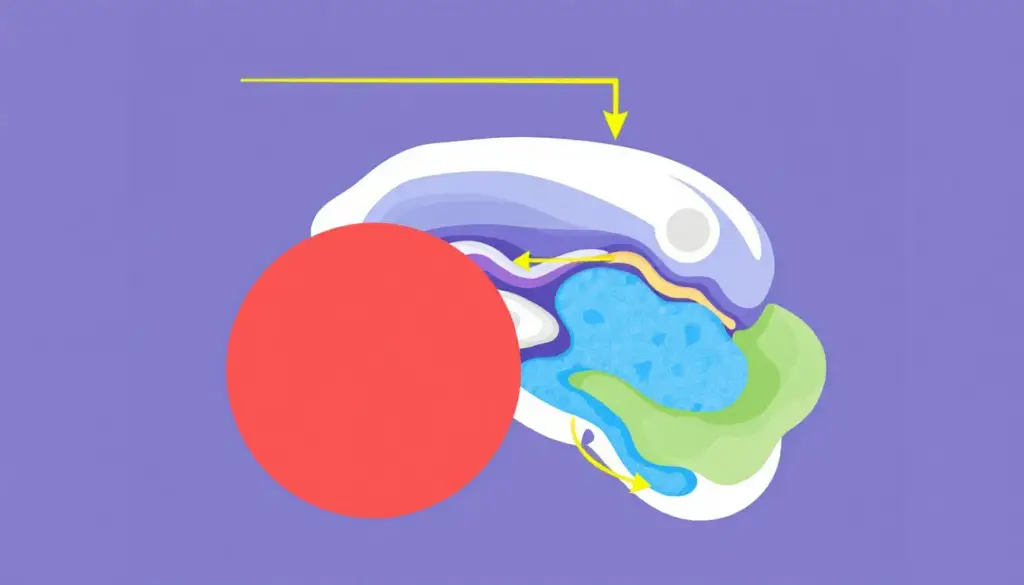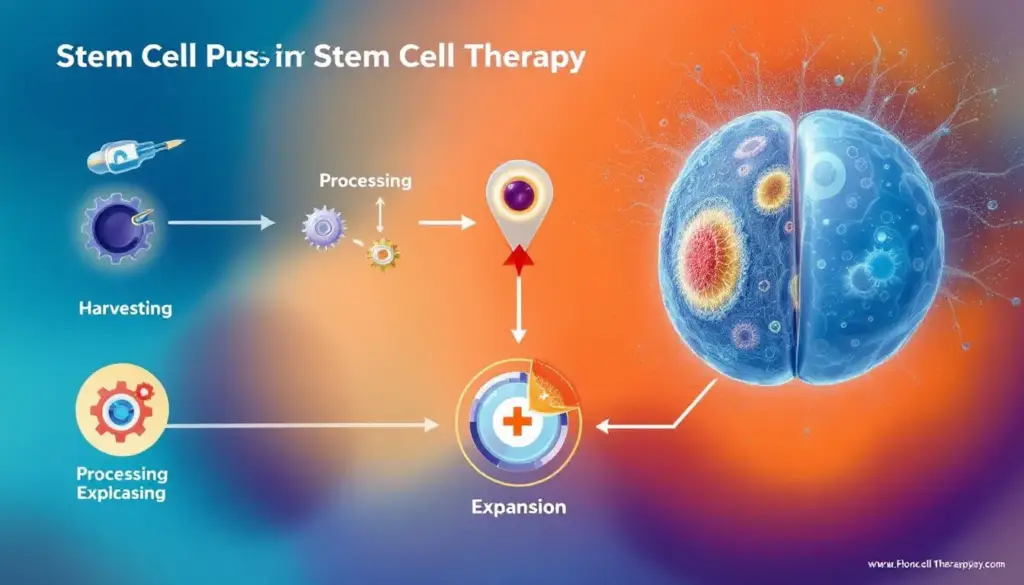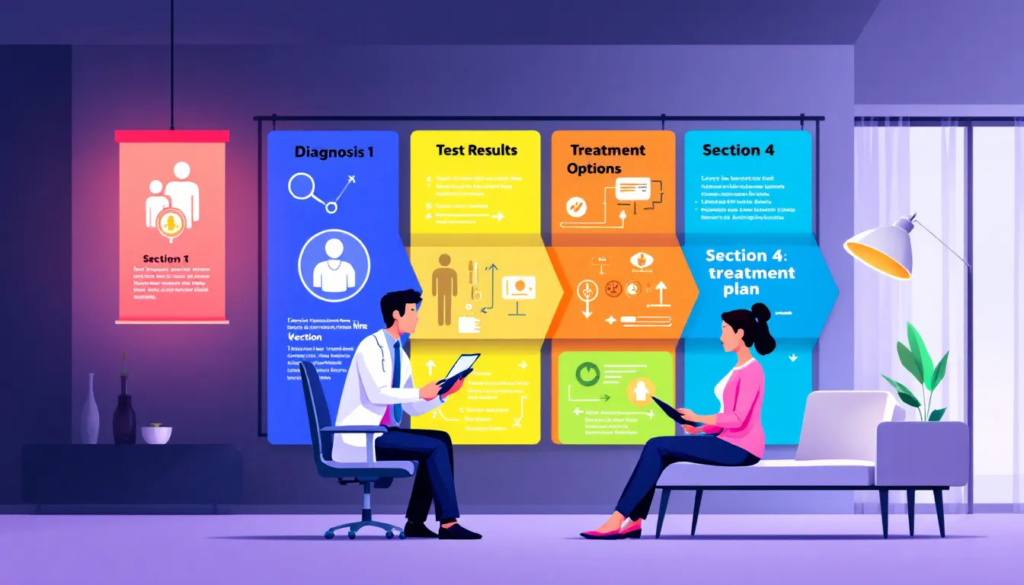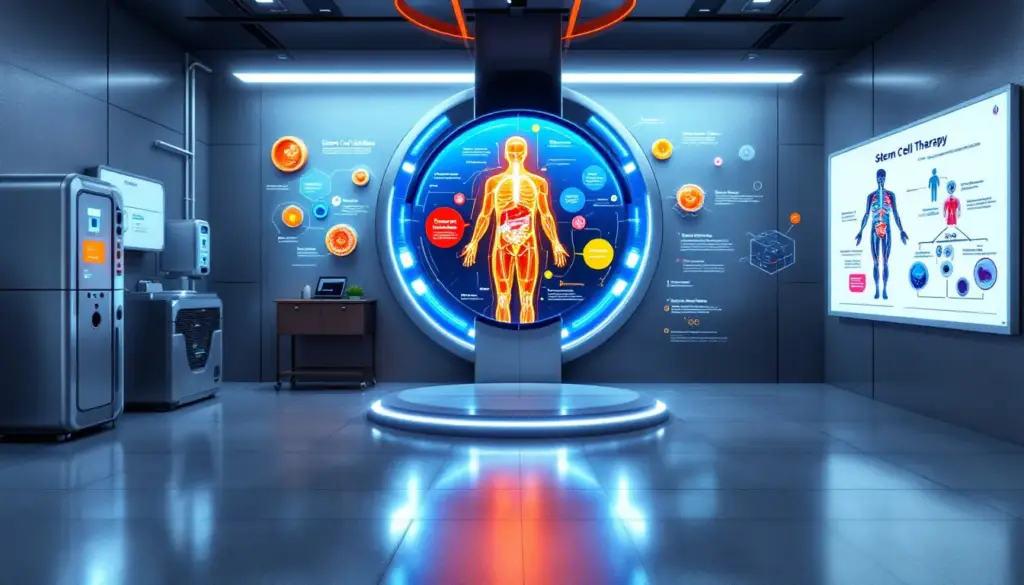Are you dealing with chronic shoulder pain and wondering if stem cell therapy for shoulder pain can provide relief as one of the latest medical treatments? Stem cell therapy for shoulder pain is a cutting-edge treatment that uses the body’s natural repair system to heal damaged tissues and reduce pain. In this article, we will delve into how stem cell therapy works, its benefits, and what you can expect from this innovative approach to pain management.
Key Takeaways
Shoulder pain can result from various causes, including injuries, degenerative diseases, and chronic conditions, necessitating early diagnosis and tailored treatment plans.
Stem cell therapy offers a promising non-invasive treatment option for shoulder pain by promoting tissue regeneration and enhancing the body’s natural healing processes.
Selecting a reputable clinic and consulting with experienced professionals is crucial for maximizing the effectiveness and safety of stem cell therapy for shoulder pain.
Understanding Shoulder Pain

Shoulder pain is a common affliction that can severely limit one’s ability to perform everyday tasks. The shoulder joint, being one of the most mobile yet complex joints in the body, is particularly susceptible to various injuries and conditions. Additionally, autoimmune diseases such as rheumatoid arthritis can also contribute to chronic shoulder pain. Chronic pain and joint pain in the shoulder can stem from numerous sources, impacting the overall functionality and quality of life.
Injuries like rotator cuff tears are prevalent causes, sometimes requiring surgical interventions. Other contributing factors include degenerative diseases and chronic conditions that can lead to ongoing discomfort. Understanding the root causes and symptoms of shoulder pain is crucial in seeking effective treatments and improving overall health.
Causes of Shoulder Pain
Shoulder pain can arise from a myriad of sources, each affecting the joint in different ways. Common causes include injuries, degenerative conditions, and chronic ailments. For instance, tendonitis occurs due to inflammation in the tendons, often resulting from overuse or repetitive strains. Similarly, rotator cuff tears can be caused by acute injuries or gradual degeneration from prolonged use.
Arthritis in the shoulder, particularly osteoarthritis, develops slowly and can worsen over time, contributing to joint pain and stiffness. These conditions highlight the importance of early diagnosis and tailored treatment plans to manage and alleviate shoulder pain effectively.
Symptoms of Shoulder Pain
The symptoms of shoulder pain can vary widely, but chronic pain is a common indicator. This pain can manifest during movement or even at rest, significantly affecting daily activities. Stiffness and a reduced range of motion are also prevalent, often accompanying the pain and limiting the functionality of the shoulder joint.
Individuals experiencing these symptoms may find it challenging to perform routine tasks, from lifting objects to simple movements like reaching overhead. Recognizing these symptoms early can lead to more effective management and treatment options for chronic disease, improving the overall quality of life for those affected.
What is Stem Cell Therapy?

Stem cell therapy, also known as regenerative therapy, is an innovative approach to pain management that enhances the body’s natural healing processes through cell regeneration. Stem cells, often referred to as the body’s master cells, have the unique ability to develop into various specialized cell types, playing a critical role in repairing damaged tissues. This non-invasive treatment offers a promising alternative to traditional methods, potentially reducing the need for surgery. In some cases, growth factors are used in conjunction with stem cell therapy to enhance tissue regeneration and repair.
The potential benefits of stem cell therapy are vast, including tissue regeneration and pain management, making it an attractive option for those suffering from chronic shoulder pain. Stem cell therapy leverages the body’s natural healing abilities to restore function and alleviate discomfort.
Types of Stem Cells Used in Therapy
There are various types of stem cells used in therapy, each with unique properties and applications. Embryonic stem cells, derived from embryos, can develop into any cell type, making them highly versatile. Induced pluripotent stem cells (iPSCs) are adult cells re-engineered to behave like embryonic stem cells, offering similar versatility.
Adult stem cells, commonly used in therapies such as hematopoietic stem cell transplants, can differentiate into specific types of cells needed for particular treatments. Adult stem cells are also used in bone marrow transplants to treat various blood-related disorders and cancers. Understanding the source and type of stem cells used is crucial for ensuring the safety and efficacy of the therapy.
How Stem Cell Therapy Works
Stem cell therapy works by harnessing the natural ability of stem cells to differentiate and regenerate damaged cells. These cells can survive outside the body in special solutions and can be manipulated to specialize into specific cell types, such as muscle or nerve cells. Stem cells can differentiate into various specialized cell types, including blood cells, which are crucial for repairing and regenerating tissues. During the healing process, stem cells are introduced to the affected area, where they divide and transform into the necessary cell types to repair the damaged tissue.
This regenerative approach not only helps in healing but also promotes overall tissue health, reducing pain and improving function. Stem cell therapy addresses the root cause of the pain, offering a holistic and effective treatment option for shoulder pain sufferers.
Stem Cell Therapy for Shoulder Pain

Stem cell treatments have shown significant promise in treating shoulder pain by enhancing tissue repair and stimulating the body’s natural healing processes. Studies have indicated that patients receiving stem cell injections for conditions like rotator cuff tears and shoulder arthritis report considerable pain relief and improved function over time.
Typically, this treatment is performed on an outpatient basis, allowing patients to go home the same day. Focusing on natural healing and reducing dependency on medications or invasive surgeries, stem cell therapy is a compelling option for chronic shoulder pain sufferers.
Benefits of Stem Cell Therapy for Shoulder Pain
Stem cell therapy for shoulder pain offers multiple benefits, including:
Reducing the need for pain medications and invasive surgeries
Promoting natural healing within the body, leading to effective recovery of damaged tissues
Significantly improving pain and joint function
Enhancing patients’ overall quality of life
Results can vary, with some patients noticing improvements within weeks, while others may take several months. This variability underscores the personalized nature of stem cell therapy and its potential for long-term relief.
Case Studies and Success Stories
Numerous case studies and success stories highlight the efficacy of stem cell therapy for shoulder pain. Patients have reported significant reductions in pain and increased ability to perform daily activities after undergoing the treatment. Many patients have reported positive outcomes after receiving treatment at a specialized stem cell institute. For many, this therapy has been transformative, enabling a return to normal routines and an improved quality of life.
For example, one patient reported a significant decrease in shoulder pain and enhanced mobility, attributing their recovery to the excellent staff and comprehensive care received during treatment. These success stories underscore the practical benefits and transformative potential of stem cell therapy.
Conditions Treated with Stem Cell Treatment
Stem cell treatment has shown promising results in treating a variety of conditions, leveraging the body’s natural healing capabilities to address a wide range of ailments. Here are some of the key conditions that can benefit from stem cell therapy:
The Procedure: What to Expect

Undergoing stem cell therapy involves several stages, starting with initial consultations and assessments, followed by the treatment procedure, and concluding with post-treatment care. This comprehensive approach guarantees personalized and effective treatments. Clinics led by experienced stem cell physicians and specialists maximize treatment outcomes and ensure patient safety.
Patients can expect thorough follow-ups post-treatment to monitor progress and address any complications that may arise. This holistic process from start to finish is designed to provide the best possible outcomes for those seeking relief from shoulder pain.
Initial Consultation and Assessment
The initial consultation and assessment are critical in determining a patient’s suitability for stem cell therapy. During this phase, healthcare professionals conduct comprehensive exams, review medical histories, and perform physical examinations to gauge the extent of the shoulder pain and its underlying causes. Imaging tests and blood work may also be necessary to confirm eligibility for the treatment.
This thorough evaluation helps in creating a tailored treatment plan, ensuring that the therapy addresses the specific needs and conditions of each patient. This initial phase lays the foundation for a successful treatment journey.
The Treatment Process
The treatment process for stem cell therapy involves several key steps. Initially, stem cells are harvested, either from the patient (autologous cells) or a donor. These cells are then kept alive in specialized solutions to maintain their viability.
The treatment process is grounded in extensive stem cell research, ensuring the highest standards of safety and efficacy.
The actual procedure, which typically lasts less than 45 minutes, involves administering the stem cells through an intravenous infusion or direct injection into the affected area. Moderate sedation is often used to ensure patient comfort, and close monitoring is maintained throughout the procedure to ensure safety.
This efficient, carefully controlled process aims to deliver the most effective treatment outcomes.
Post-Treatment Care and Recovery
Post-treatment care and recovery are crucial components of the stem cell therapy process. Patients typically begin low-impact activities immediately after the procedure, with overall recovery being significantly shorter compared to traditional surgery. Follow-up appointments are essential to monitor healing progress and manage any mild side effects, such as fatigue or discomfort at the injection site.
Adhering to care instructions and attending scheduled follow-ups ensures optimal recovery and maximizes the benefits of the treatment. Patients can expect to see gradual improvements in their shoulder pain and function over the following weeks and months.
Choosing the Right Clinic for Stem Cell Therapy

Selecting the right clinic for stem cell therapy is a pivotal step in the treatment journey. Factors such as clinic reputation, the qualifications of the doctors, patient reviews, and the level of personalized care provided should be carefully considered. Clinics that prioritize innovation and patient well-being are often the best choices.
Compliance with regulatory standards and employing experienced specialists can significantly impact the success of the therapy. An informed choice ensures the highest quality care and the best possible outcomes.
Key Factors to Consider
When choosing a clinic for stem cell therapy, several key factors should be considered. The reputation of the clinic and the qualifications of the medical professionals are paramount. Personalized treatment plans tailored to individual needs can offer significant benefits, enhancing the effectiveness of the therapy.
Patient reviews and feedback offer valuable insights into the quality of care and overall patient experience. Clinics that focus on innovation and personalized care, particularly in regions known for their expertise, such as Los Angeles, can offer the highest quality of treatment.
Questions to Ask Your Doctor
During your consultation, asking the right questions is crucial to ensure you receive the best care. Inquire about the physician’s experience and specific training in stem cell therapies. Understanding the provider’s expertise can significantly influence the treatment outcome.
It is also important to ask whether the clinic uses imaging guidance during procedures to ensure accurate placement of the stem cells. This precision can enhance the effectiveness of the therapy and reduce potential risks.
Asking these questions helps make an informed decision and ensures the highest quality care for your shoulder pain.
Potential Risks and Side Effects
While stem cell therapy is generally considered safe, it is not without potential risks and side effects. Mild side effects, such as temporary discomfort at the injection site, fatigue, and mild pain, are common. It is important to weigh these potential adverse effects against the benefits of the therapy.
Serious complications, though rare, can include infections and severe immune responses. Continuous monitoring and immediate medical intervention are essential in managing these risks. Understanding these potential risks enables informed decision-making and preparedness for any complications.
Common Side Effects
Common side effects of stem cell therapy are typically mild and manageable. Patients often experience temporary discomfort at the injection site, which usually resolves within a few days. Fatigue and mild pain are also common, and resting for the first 24-48 hours after the procedure is recommended to enhance recovery.
To support the healing process, patients are advised to avoid anti-inflammatory medications for two weeks following the treatment. Understanding these common side effects and following post-treatment guidelines can help ensure a smooth recovery and maximize the benefits of stem cell therapy.
Serious Risks and Complications
Although rare, serious complications from stem cell therapy can occur and may require immediate medical attention. These can include severe infections and significant immune responses, which are managed through careful monitoring and appropriate medical intervention. In some cases, patients may develop conditions like graft-versus-host disease, posing serious health risks. In rare cases, stem cells may differentiate into unintended cell types, such as brain cells, leading to complications.
It is crucial for patients to have continuous professional guidance to address any arising complications swiftly. Understanding these potential risks allows patients to make informed decisions and be prepared to seek prompt medical care if necessary.
Other Treatment Options for Shoulder Pain
For those who may not be suitable candidates for stem cell therapy or are exploring alternative options, several other treatments for shoulder pain are available. Traditional methods such as medications, physical therapy, and surgical interventions can be effective for managing chronic pain and improving joint function.
Additionally, alternative non-surgical treatments, like platelet-rich plasma (PRP) therapy, can enhance recovery experiences and outcomes for patients seeking relief from shoulder pain. Evaluating these options with a healthcare provider can help determine the most appropriate and effective treatment plan for individual needs.
Platelet Rich Plasma (PRP) Therapy
Platelet Rich Plasma (PRP) therapy is a type of regenerative therapy that uses platelets from the patient’s own blood to stimulate healing and tissue repair. Often used in conjunction with stem cell therapy, PRP therapy enhances the effectiveness of regenerative treatments.
Summary
Stem cell therapy represents a groundbreaking approach to managing shoulder pain, leveraging the body’s natural healing processes to repair damaged tissues and alleviate discomfort. By understanding the causes and symptoms of shoulder pain, patients can better appreciate the potential benefits of this innovative treatment.
Selecting the right clinic and being aware of the procedure, post-treatment care, and potential risks are crucial for achieving the best outcomes. Stem cell therapy offers a promising solution for those suffering from chronic shoulder pain, providing hope and improved quality of life through advanced regenerative medicine.
Frequently Asked Questions
What are the primary causes of shoulder pain?
The primary causes of shoulder pain include injuries like rotator cuff tears, degenerative conditions such as arthritis, and chronic issues affecting the shoulder joint. Understanding these causes is crucial for effective management and treatment.
How does stem cell therapy work for shoulder pain?
Stem cell therapy for shoulder pain works by injecting stem cells into the affected area to regenerate damaged tissues and promote natural healing, which ultimately alleviates pain. This approach harnesses the body’s own repair mechanisms for effective recovery.
What are the benefits of stem cell therapy for shoulder pain?
Stem cell therapy for shoulder pain can significantly reduce the need for medications and surgeries while enhancing natural healing and improving pain and joint function. These benefits make it a promising treatment option for those suffering from shoulder pain.
What should I expect during the stem cell therapy procedure?
You can expect the stem cell therapy procedure to last less than 45 minutes, during which stem cells will be harvested and administered to the affected area under moderate sedation, with safety monitored throughout.
Are there any risks associated with stem cell therapy?
Yes, stem cell therapy can involve risks such as mild side effects like discomfort and fatigue, as well as rare but serious complications like infections and immune responses. It’s essential to weigh these risks against the potential benefits before proceeding.

